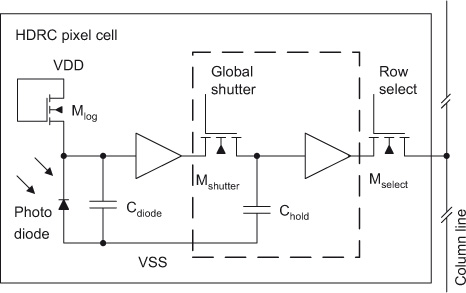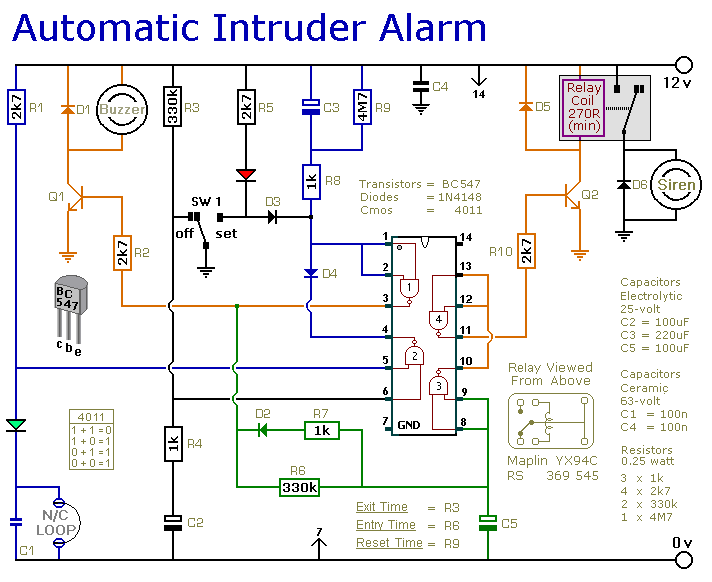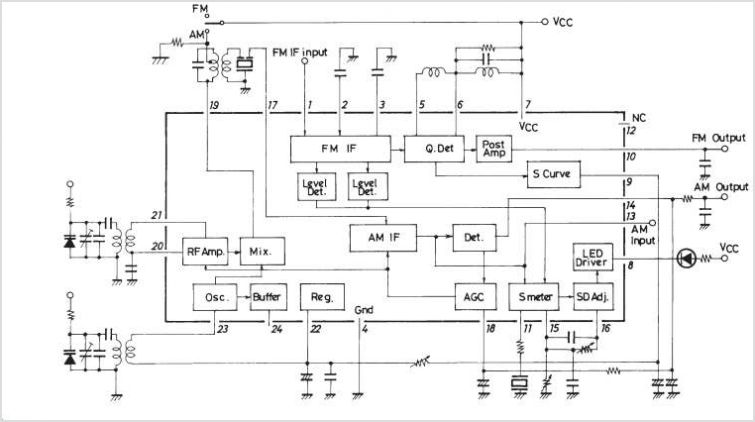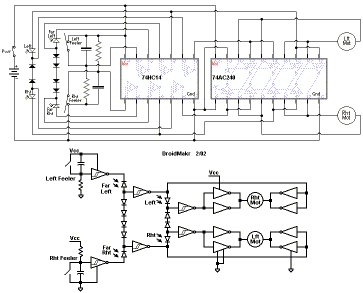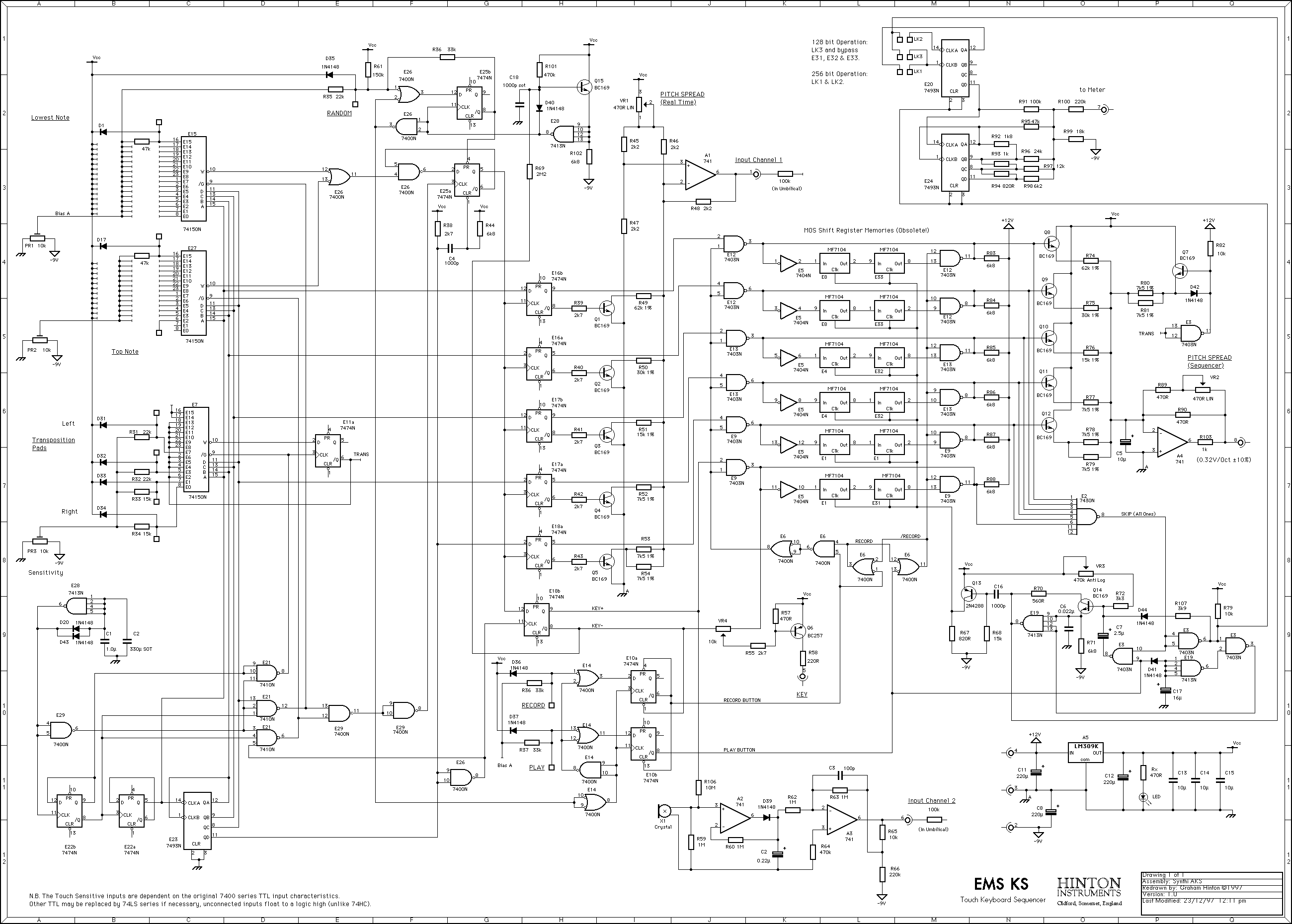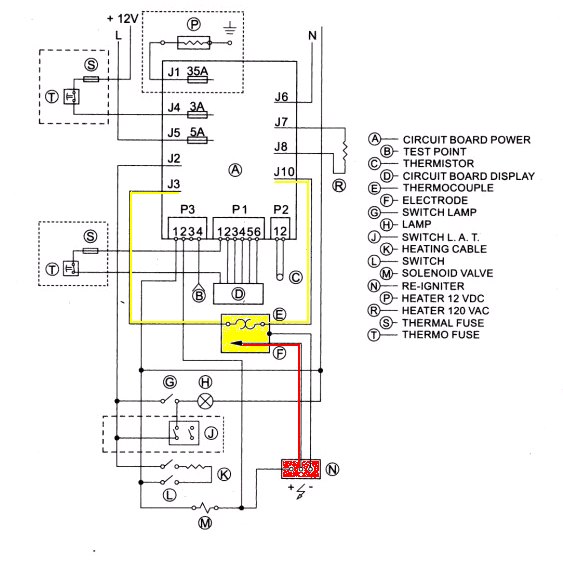
ems metaboard
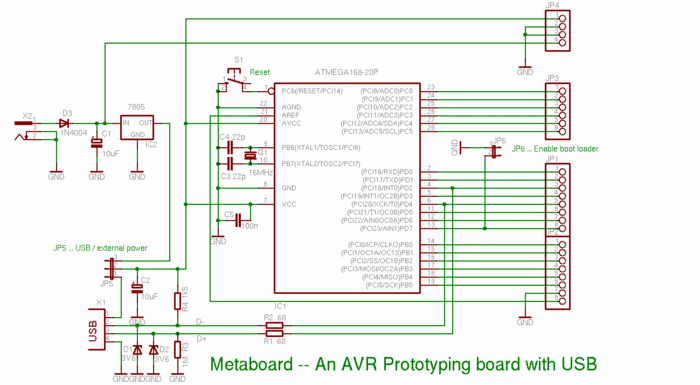
Any microcontroller from the ATmegaXX8 family can be utilized, although investing a small amount in additional flash memory is advisable. A DIP socket is technically optional, but its absence is not recommended. A 28-pin DIP socket is somewhat uncommon; if unavailable, a combination of a 20-pin socket and an 8-pin socket can be used as a substitute. The 20pF capacitors are intended for crystal loading, and standard dipped ceramic types are adequate. A 22pF capacitor may be used if that is what is available, provided they match. When selecting a crystal, ensure it has a frequency of 12, 15, 16, or 20MHz, and verify the specifications for the appropriate loading capacitor values. A three-pin crystal oscillator may also be used in place of the crystal and loading capacitors. Zener diodes are included to limit the USB D+ and D- voltages to 3.6V instead of the native 5V when the AVR drives the data lines. While most modern USB hosts can handle 5V on the data lines, some older models cannot. It is crucial to select a suitable 3.6V Zener diode, as high-current variants may switch too slowly and distort the USB waveform. The 1N5227B, rated for 20mA Zener current, is recommended. The pushbutton switch serves as a reset mechanism; while optional, it is a useful feature. Any normally-open switch can be used, including salvaged ones from old devices. The breakaway header is compatible with jumpers found on computer motherboards and hard disks, allowing for the selection of either the bootloader or application to run upon power-up. An SPST toggle switch can also be employed as an alternative. The most economical source for a USB cable is a USB "A" to "B" cable from a dollar store, which can be modified by cutting off the "B" end. For strain relief, the cable can be secured to the circuit board with a zip tie. The design includes a six-pin ISP header, which may be added for in-circuit debugging or bootloader firmware development, although it may not be essential. The circuit is based on a Metaboard schematic, differing primarily by the absence of a separate power source and additional headers. Many similar circuits exist online, with variations being beneficial. However, designs that regulate the USB +5V down to 3.3V using diodes or low-drop voltage regulators are not favored, as the ATmega328P requires a Vcc of +5V for clock speeds exceeding 10MHz. The layout shown may function but is not optimal; for instance, the routing of the D+ line under a resistor lead is subpar. It may be advantageous to swap the vertical columns for the D+ and D- connections. The USB D+ line should be linked to a hardware interrupt (INT0 or INT1), while USB D- and the jumper detect can connect to any two different general-purpose I/O lines. The USBaspLoader software defaults to using PD4 and PD7 for these functions. A hardware reset line is optional but enhances convenience during development cycles, allowing for flashing, testing, and resetting without unplugging. If an additional I/O pin is necessary, disabling the reset in the fuses permits the use of PC6 instead. Short segments of recycled component leads can be employed to connect AGND to ground, AREF to Vcc, AVCC to Vcc, and the four eight-pin rails in the prototyping areas to the nearest ground or Vcc. This configuration is suitable for most applications, with the option for modifications as required. It is advisable to initially connect the newly assembled board to a low-cost USB power supply before using it with more expensive devices.
The circuit described is designed around an ATmega microcontroller, which can be selected from the ATmegaXX8 family, such as the ATmega328P. The microcontroller is configured to operate at various clock speeds, facilitated by an external crystal oscillator connected to the appropriate loading capacitors. The circuit includes provisions for USB communication, with Zener diodes used to protect the data lines from overvoltage, ensuring compatibility with both modern and older USB hosts. The optional reset switch enhances usability during development, allowing for easy resets without the need to disconnect power.
The design accommodates flexibility in component selection, allowing for different crystal frequencies and capacitor values based on availability. The inclusion of an ISP header supports firmware updates and debugging, while the breakaway header enables easy configuration for bootloader or application execution. The layout should be optimized for signal integrity, particularly for the USB data lines, to prevent interference and maintain reliable communication.
Overall, this circuit design is well-suited for prototyping and development purposes, providing a solid foundation for various applications while allowing for customization and enhancements as needed. Careful attention to component selection and layout will ensure a robust and functional electronic device.Any microcontroller in the ATmegaXX8 family should work, though if you`re going to go to the trouble of building this, spending a few tens of cents on extra flash memory seems like a prudent idea. A DIP socket is, strictly speaking, optional, but not having it is a genuinely bad idea. (Update: a 28-pin DIP socket is a bit of an oddball size. If you don`t have one handy, you can substitute a 20-pin socket plus an 8-pin socket. ) The 20pF caps are for loading the crystal. The cheap dipped ceramic kind work fine. You might be able to get away with 22pF if that`s what you have on hand (but make sure they match!). If you pick a different crystal speed, check the specs to find the right loading capacitor value. The crystal can be 12, 15, 16 or 20MHz. (Make sure you get one with at least five significant digits, e. g. 12. 000. ) You might also be able to substitute a three-pin crystal oscillator for the crystal and loading caps. The Zener diodes are there to clamp the USB D+ and D- voltages to 3. 6V (rather than the native 5V) when the AVR is driving the data lines. Most modern USB hosts deal with 5V on the data lines just fine, but some older ones do not. Not just any 3. 6V Zener diode will do; the high-current ones switch too slowly and distort the USB waveform too much.
Get the 1N5227B rated for 20mA Zener current. The pushbutton switch is for reset. It`s totally optional, but convenient. Use any junk-box normally-open switch you like. (I salvaged mine from a broken stereo receiver. ) The breakaway header should fit the kind of jumper you see on computer motherboards and hard disks. The jumper is there to let you select if the bootloader or application runs when power is first applied.
You could use an SPST toggle switch instead if you like. The least expensive source I found for the USB cable was to buy a USB "A" to "B" cable at the dollar store, then hack off the "B" end. I tied the cable to the circuit card with a zip tie for strain relief. The version in the picture has a six-pin ISP header. You can certainly add one if you like, though it probably won`t be much use unless you`re developing new bootloader firmware or doing in-circuit debugging or something.
Start by having a look at the Metaboard schematic (link goes to original Metalab site). My circuit is essentially the same, but without the provision for a separate power source, and none of the extra headers. There are many similar circuits around the `net, and variety is good. However, I`m not fond of the designs that regulate the USB +5V down to 3. 3V (using a couple diodes or a low-drop voltage regulator). My understanding is that the ATmega328P needs a Vcc of +5V for clock speeds over 10MHz. The picture at the top of the article shows the layout I used, which certainly works but isn`t really ideal.
(I`m especially offended by how I routed the D+ line - the white wire - under a resistor lead. ) It would probably be improved by swapping the vertical columns used by the D+ and D- stuff. The USB D+ line must be connected to a hardware interrupt (INT0 or INT1). USB D- and the jumper detect can go to any (two different) general-purpose IO lines. (Out of the box, the USBaspLoader software expects PD4 and PD7 respectively, so that`s what I used. ) Having a hardware reset line is optional, but makes the development cycle a lot more convenient. (You can flash, test, reset instead of flash, test, unplug, re-plug). If you need one more IO pin really badly, you can always disable reset in the fuses and use PC6 instead. I used small lengths of recycled component leads to jumper AGND to ground, AREF to Vcc, AVCC to Vcc and the four eight-pin rails in the prototyping areas to whichever of ground or Vcc was nearest.
This should be a good choice for most applications, but feel free to alter as needed. If you`re the careful sort, plug the newly-assembled board into a cheap USB power supply first, before risking an expensi 🔗 External reference
The circuit described is designed around an ATmega microcontroller, which can be selected from the ATmegaXX8 family, such as the ATmega328P. The microcontroller is configured to operate at various clock speeds, facilitated by an external crystal oscillator connected to the appropriate loading capacitors. The circuit includes provisions for USB communication, with Zener diodes used to protect the data lines from overvoltage, ensuring compatibility with both modern and older USB hosts. The optional reset switch enhances usability during development, allowing for easy resets without the need to disconnect power.
The design accommodates flexibility in component selection, allowing for different crystal frequencies and capacitor values based on availability. The inclusion of an ISP header supports firmware updates and debugging, while the breakaway header enables easy configuration for bootloader or application execution. The layout should be optimized for signal integrity, particularly for the USB data lines, to prevent interference and maintain reliable communication.
Overall, this circuit design is well-suited for prototyping and development purposes, providing a solid foundation for various applications while allowing for customization and enhancements as needed. Careful attention to component selection and layout will ensure a robust and functional electronic device.Any microcontroller in the ATmegaXX8 family should work, though if you`re going to go to the trouble of building this, spending a few tens of cents on extra flash memory seems like a prudent idea. A DIP socket is, strictly speaking, optional, but not having it is a genuinely bad idea. (Update: a 28-pin DIP socket is a bit of an oddball size. If you don`t have one handy, you can substitute a 20-pin socket plus an 8-pin socket. ) The 20pF caps are for loading the crystal. The cheap dipped ceramic kind work fine. You might be able to get away with 22pF if that`s what you have on hand (but make sure they match!). If you pick a different crystal speed, check the specs to find the right loading capacitor value. The crystal can be 12, 15, 16 or 20MHz. (Make sure you get one with at least five significant digits, e. g. 12. 000. ) You might also be able to substitute a three-pin crystal oscillator for the crystal and loading caps. The Zener diodes are there to clamp the USB D+ and D- voltages to 3. 6V (rather than the native 5V) when the AVR is driving the data lines. Most modern USB hosts deal with 5V on the data lines just fine, but some older ones do not. Not just any 3. 6V Zener diode will do; the high-current ones switch too slowly and distort the USB waveform too much.
Get the 1N5227B rated for 20mA Zener current. The pushbutton switch is for reset. It`s totally optional, but convenient. Use any junk-box normally-open switch you like. (I salvaged mine from a broken stereo receiver. ) The breakaway header should fit the kind of jumper you see on computer motherboards and hard disks. The jumper is there to let you select if the bootloader or application runs when power is first applied.
You could use an SPST toggle switch instead if you like. The least expensive source I found for the USB cable was to buy a USB "A" to "B" cable at the dollar store, then hack off the "B" end. I tied the cable to the circuit card with a zip tie for strain relief. The version in the picture has a six-pin ISP header. You can certainly add one if you like, though it probably won`t be much use unless you`re developing new bootloader firmware or doing in-circuit debugging or something.
Start by having a look at the Metaboard schematic (link goes to original Metalab site). My circuit is essentially the same, but without the provision for a separate power source, and none of the extra headers. There are many similar circuits around the `net, and variety is good. However, I`m not fond of the designs that regulate the USB +5V down to 3. 3V (using a couple diodes or a low-drop voltage regulator). My understanding is that the ATmega328P needs a Vcc of +5V for clock speeds over 10MHz. The picture at the top of the article shows the layout I used, which certainly works but isn`t really ideal.
(I`m especially offended by how I routed the D+ line - the white wire - under a resistor lead. ) It would probably be improved by swapping the vertical columns used by the D+ and D- stuff. The USB D+ line must be connected to a hardware interrupt (INT0 or INT1). USB D- and the jumper detect can go to any (two different) general-purpose IO lines. (Out of the box, the USBaspLoader software expects PD4 and PD7 respectively, so that`s what I used. ) Having a hardware reset line is optional, but makes the development cycle a lot more convenient. (You can flash, test, reset instead of flash, test, unplug, re-plug). If you need one more IO pin really badly, you can always disable reset in the fuses and use PC6 instead. I used small lengths of recycled component leads to jumper AGND to ground, AREF to Vcc, AVCC to Vcc and the four eight-pin rails in the prototyping areas to whichever of ground or Vcc was nearest.
This should be a good choice for most applications, but feel free to alter as needed. If you`re the careful sort, plug the newly-assembled board into a cheap USB power supply first, before risking an expensi 🔗 External reference
